Even though my favorite high-country creeks didn’t dry up this past summer, by late June through August they were mostly unfishable. These creeks weren’t immune to the West’s outstanding heat and record drought, despite sitting at almost 9,000 feet above sea level. The landscape was so dry that the soil soaked up any extra water before it could drain off into the creeks, streams, and rivers.
As a guide, that put me in a tough spot. My clients usually book with me for the solitude of the area I guide, and the unique small-stream opportunities that await anyone willing to work more than the average angler. I can’t remember any fish that’d set Instagram on fire, but we caught tons of native cutthroat and plenty of non-native brookies before the heat baked the streams to a balmy 72 degrees. To take advantage of what little time we had to fish the high country, I told clients to meet at 6 a.m. instead of the usual 8:30 a.m. That bought us some time, but not enough to fill an eight-hour day.
Which left me with a problem to which I had a solution but I was loath to try out—fly fishing lakes. I’m not great at fishing lakes. I never have been. But I had to figure a few things out, and quickly, because lakes were fast becoming my only option to give clients a trip they’d remember. So I put on a brave face, told clients about an awesome little brookie lake tucked away beneath the cirque of a barren ridge, and made hiking in a few extra miles seem like its own adventure.
The area where I’m permitted to guide is speckled with small ponds, most of them fishless. The ones with fish all tend to be about 9,500 or more feet above sea level, and they’re deep, spring fed affairs. I’ve fished most of them at least once, but I hadn’t been to any since before guide season started.
After a few days of fishing various lakes, patterns started to emerge. And by the time I had spent the remainder of my guide season almost exclusively on stillwater, I achieved a comfort level with lake fishing that had previously proved elusive. While I’m far from any sort of expert, I learned a few things that really helped me not only become a better angler, but a better guide as well.
Structure Matters
This one sounds and feels obvious, but it’s just as true on a lake as it is in a river. Trout need structure from an evolutionary standpoint; otherwise, they’d just be food for every osprey and eagle around.
The trick is finding that structure within a lake, especially when fishing from shore.
Drop-offs were the most productive spots to find fish this past summer. The abrupt change from shallow to deep water creates shadows, offering trout a place to hide from both predators and their prey. Sinking nymphs along the edge, or pulling streamers parallel with the drop-off, puts plenty of fish in the net.
Sunken trees are a great spot as well. They create the same shadows as a drop-off, but offer slightly more in the way of safety from predators. Often, the biggest fish in a lake will hide out beneath sunken trees or logs.
On one lake I frequented this summer, an entire end of it was full of sunken tree stumps - like someone had chopped the trees down, then flooded the area with a few feet of water. The number of fish swimming between those bare stumps always surprised me, and that spot offered the best sight-fishing opportunities on a lake I’ve ever had. For someone who loves sight-fishing on small streams to trout, this was the next best thing.
Rocks are another obvious, but often-overlooked, piece of structure. While on an after-guide-season-and-before-hunting-season trip in Wyoming, I fished a handful of lakes with shorelines featuring more boulders than dirt. Those boulders continued on into the lake, and throwing blind casts ahead, or to the sides, of those rocks provoked a surprising number of strikes.
That trip also reminded me of a reality that I rarely consider. Lakes reside in bowls or basins that were, at one point, dry. The topography doesn’t magically change to silt and mud the second water fills the area. That topography continues, at least for a few feet, down into the lake.
While on a pond at the top of a steep canyon in the Winds, I found myself tucked against a cliff, on the opposite side of the lake from where I’d started fishing. From that spot on the lake, the cliff looked like it terminated at the water’s edge. Once I stood over there, though, I saw that the cliff continued down into the lake past my line of sight.
And along that cliff were a half-dozen golden trout, all happy to smack my leech patterns.
Chunk it up
Lakes intimidated me for reasons that many anglers feel trepidation when facing big water. There’s simply so much space and very few easy-to-see starting points.
What I noticed this past summer was that when I focused on just fishing the piece of shoreline I stood on, I learned to see the spots I thought fish would be, just like I can on a river. While I wasn’t always right, I had more confidence in what I was doing - and that made a noticeable difference. Getting to the lake and feeling comfortable instead of overwhelmed was a welcome change of pace.
So, I’d suggest that you focus on fishing one specific piece of structure you’ve found. Work streamers, nymphs, or soft-hackles through and around logs and rocks. Once you’ve caught those fish, or they’ve refused your flies (or simply aren’t there), move on to the next piece of structure.
The flies
Aside from the size of the water intimidating me, I shied away from lake fishing so often because I never felt I had the right flies. My boxes are full of small spent-wings, parachutes, hare’s ears, pheasant tails, zebra midges, and river-sized leeches. Typical fare for small trout on small streams.
Thankfully, as I learned this summer, you don’t need a whole new fly collection to find success on a lake. My clients caught plenty of fish on hare’s ears, zebra midges, and pheasant tails.
While I’d highly recommend micro-leeches, scuds, and medium-sized streamers, what’s more important is how you fish these flies.
The action
Charlie Card, a renowned guide on Utah’s Green River, taught me the hand-strip retrieve one cold and blustery Spring day years ago. Instead of the traditional stripping motion often associated with streamers — pulling in a few inches of line at a time, in jerky, or slow, motions — you simply grab your slack line between your pinky and ring finger, then twist your wrist away from you. Drop the line that was in your fingers, grab a new section, and repeat the twist. This motion slowly, but consistently, moves your flies in a way that’s more reminiscent of how bugs move in still water.
Another trick I learned from a Green River guide is to troll flies. Even on a floating line, this works better than you’d expect. A few of the lakes I guide have boat ramps, and they’re best fished from a boat anyways. I’ll launch the drift boat, have my clients cast toward the middle of the lake, then slowly row back towards the shore. This mimics the usual presentation anglers use when shore fishing, but does so with less line out and far fewer opportunities to throw a tailing loop. It also triggers strikes, especially when fish are feeding on emergers.
Finally, don’t be too proud to tie on a couple of nymphs beneath a bobber. If the lake’s a bit choppy, tie your flies on using the Rapala knot (some folks call it the non-slip mono loop). This allows the flies to bounce and move in the water column more freely than the standard clinch or Davy knot does. If I’m fishing chironomids, an indicator setup like this is usually my go-to. While I personally get bored staring at bobbers, plenty of anglers — and clients — enjoy waiting for that indicator to drop and the line to tighten.
With this past season now firmly in the rearview mirror, and most lake fishing opportunities icing up as we speak, I find myself longing for another few days of standing on a muddy shore, casting to fish just on the edge of a dark weed bed. The silence and the solitude of an out-of-the-way trout lake is hard to beat.




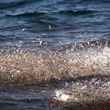
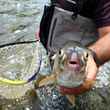
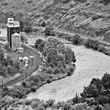
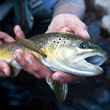



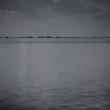
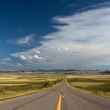



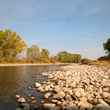
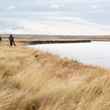




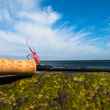



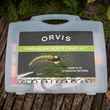
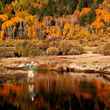


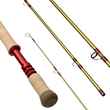
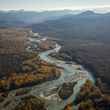
Comments
martin edwards replied on Permalink
What an excellent read! I like to fish the high Sierra lakes while hiking and I learned a lot from this thoughtful and enlightening article.
Pages